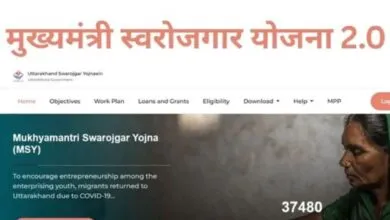What is BharatNet project? [PDF]
![What is BharatNet project? [PDF]](https://hellobanker.in/wp-content/uploads/2025/04/Bank-Robbery_20250422_124626_0000-780x470.webp)
The BharatNet project is a massive step towards building a connected India. By providing internet access to rural areas, the government is ensuring that no one is left behind in the digital revolution. It empowers communities, supports education, healthcare, employment, and helps create a stronger, more inclusive digital India.
Q1: What is the BharatNet project?
Answer:
BharatNet is a large-scale initiative by the Government of India to provide high-speed internet to every village in the country. The goal is to connect all Gram Panchayats (village-level governing bodies) with broadband internet. It is considered one of the biggest rural telecom projects in the world.
Q2: Why was the BharatNet project launched?
Answer:
The main aim of BharatNet is to ensure that people in rural areas have access to the internet just like those in cities. With this internet access, services like online education, digital healthcare, online banking, and e-governance can reach villages. It helps bridge the digital gap between urban and rural India and supports the dream of a digitally empowered society.
Q3: How many villages are being connected under BharatNet?
Answer:
The project initially planned to connect around 2.5 lakh Gram Panchayats across the country. Over time, it has expanded to include even more villages and areas.
Q4: How is the BharatNet project being implemented?
Answer:
The BharatNet project is being rolled out in three major phases:
- Phase I (Completed): Connected 1 lakh Gram Panchayats using existing fibre cables and infrastructure. This phase was completed by December 2017.
- Phase II (Ongoing): Aims to connect another 1.5 lakh villages using technologies like optical fibre, radio signals, and satellites. This phase also includes help from state governments and private companies.
- Phase III (Ongoing): Focuses on preparing the network for the future by integrating 5G, improving internet speed, and strengthening last-mile connectivity (the final leg to homes and institutions).
Q5: What is the Amended BharatNet Program (ABP)?
Answer:
The Amended BharatNet Program (ABP) was approved in August 2023 to make the project even more effective. Under ABP:
- 2.64 lakh villages will be connected using a ring topology (a reliable circular network setup).
- Villages that are not Gram Panchayats will get internet on demand.
- It includes advanced systems like IP-MPLS routers, 10 years of maintenance, power backup, and a remote fibre monitoring system (RFMS).
- The government has set aside Rs. 1,39,579 crore for this improved version of the project.
Q6: Are there any other government programs that support rural digital empowerment?
Answer:
Yes, some other major programs that work alongside BharatNet are:
- PMGDISHA (Pradhan Mantri Gramin Digital Saksharta Abhiyan): A mission to teach digital skills to rural citizens. As of March 2024, over 6.39 crore people have been trained.
- National Broadband Mission (NBM): Launched to speed up the development of digital infrastructure. NBM 2.0 was introduced in January 2025 and includes the GatiShakti Sanchar Portal for faster approvals of telecom infrastructure.
Q7: How is the BharatNet project being funded?
Answer:
BharatNet is funded through the Digital Bharat Nidhi (DBN), which has replaced the older Universal Service Obligation Fund (USOF).
- The total approved budget for Phase I and II is Rs. 42,068 crore.
- As of December 2023, the government has already spent Rs. 39,825 crore on this project.
Q8: Who is responsible for running BharatNet?
Answer:
The project is managed by a special government company called Bharat Broadband Network Limited (BBNL), created in 2012. Under the latest ABP program, BSNL has been appointed to manage and maintain the entire BharatNet network.
Q9: What is the current status of BharatNet (as of early 2025)?
Answer:
- 2,18,347 Gram Panchayats are ready for internet services.
- Over 42.13 lakh kilometers of optical fibre cables have been laid.
- 12.21 lakh Fibre-To-The-Home (FTTH) connections are active.
- Over 1 lakh Wi-Fi hotspots have been set up in villages.
Q10: How is the BharatNet network used by people and institutions?
Answer:
The network is used in three major ways:
- Leasing fibre and bandwidth to telecom and internet companies.
- Public Wi-Fi hotspots to allow people to connect to the internet.
- FTTH (Fibre to the Home) connections for schools, hospitals, government offices, and homes.
Q11: What benefits has BharatNet brought to rural India?
Answer:
The impact of BharatNet is significant and includes:
- Digital Inclusion: Internet access in even the most remote villages.
- Education: Online classes and access to digital learning.
- Healthcare: Telemedicine and online health advice.
- Economic Growth: Access to online banking, business tools, and jobs.
- E-Governance: Faster, easier access to government services.
Q12: What is CSC e-Governance’s role in BharatNet?
Answer:
CSC e-Governance Services India Limited has been tasked with bringing internet to the last point—homes and public places—through Wi-Fi and FTTH.
- As of September 2024:
- 1,04,574 Wi-Fi Access Points
- 11,41,825 FTTH connections
- They also ran a pilot project using overhead cables for better coverage.
Q13: Is there any collaboration with financial institutions for rural development?
Answer:
Yes, Digital Bharat Nidhi (DBN) has signed an agreement with NABARD (National Bank for Agriculture and Rural Development). Together, they aim to:
- Share digital resources and services.
- Build awareness about digital tools.
- Promote digital infrastructure and a rural digital economy.
Q14: How is BharatNet helping improve mobile connectivity?
Answer:
While BharatNet focuses on broadband, the government is also working on improving mobile network access in villages:
- 6.25 lakh villages have mobile network coverage.
- 6.18 lakh villages have access to 4G.
- The average internet speed on mobile phones in rural areas has increased significantly.
